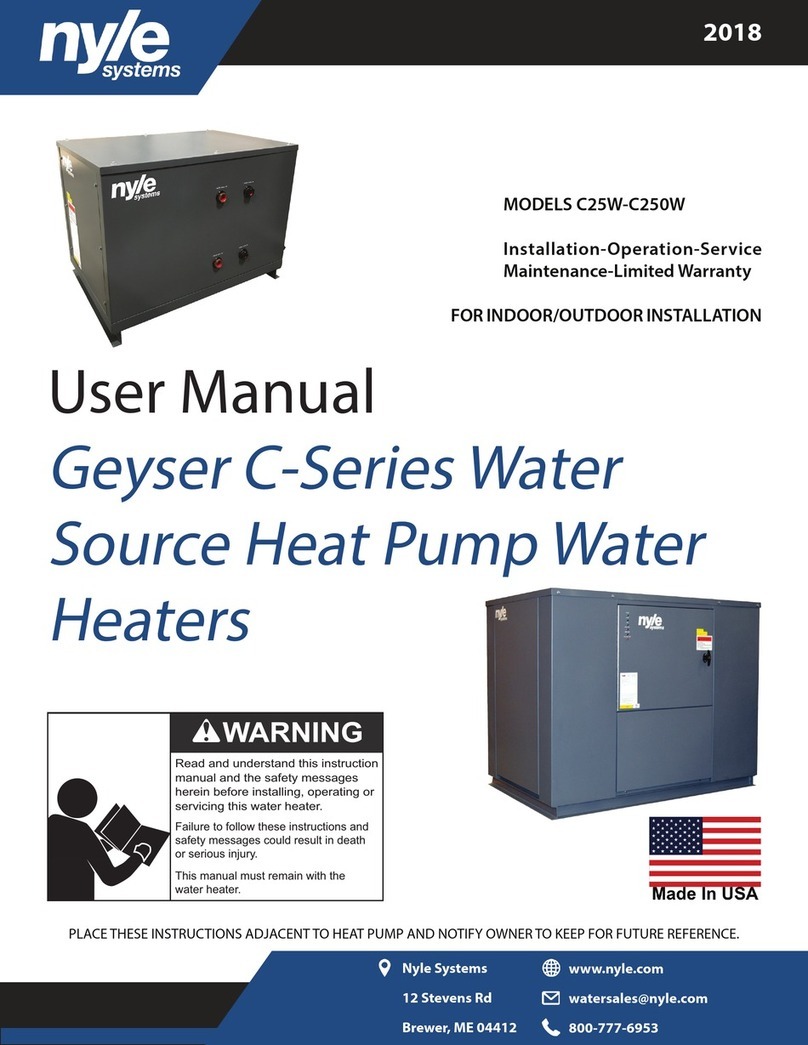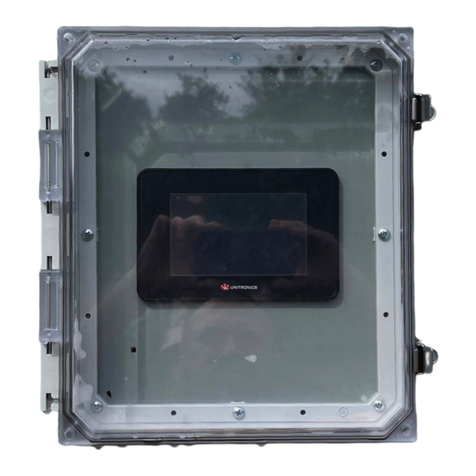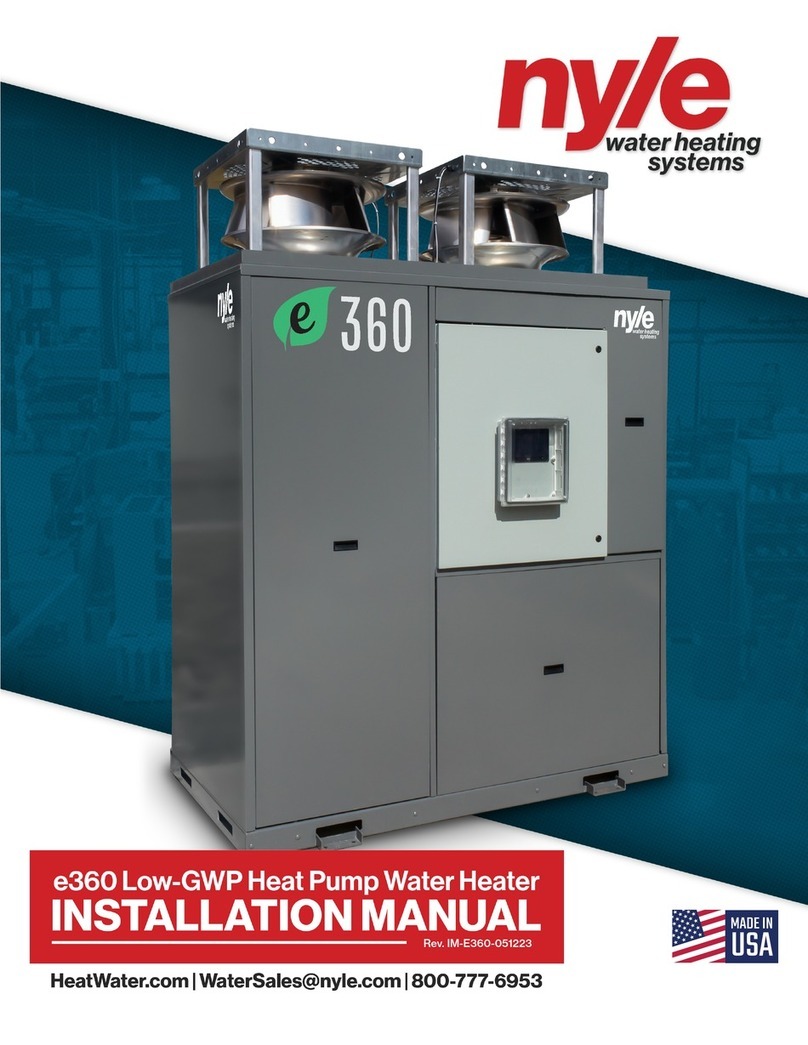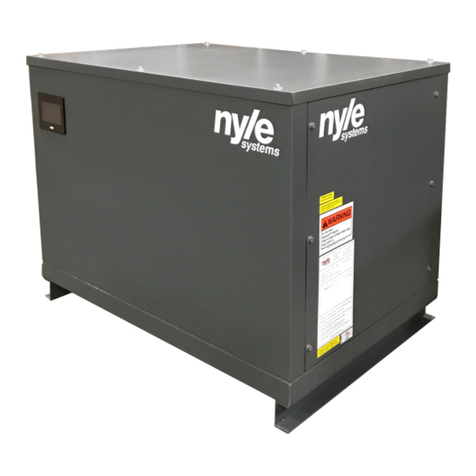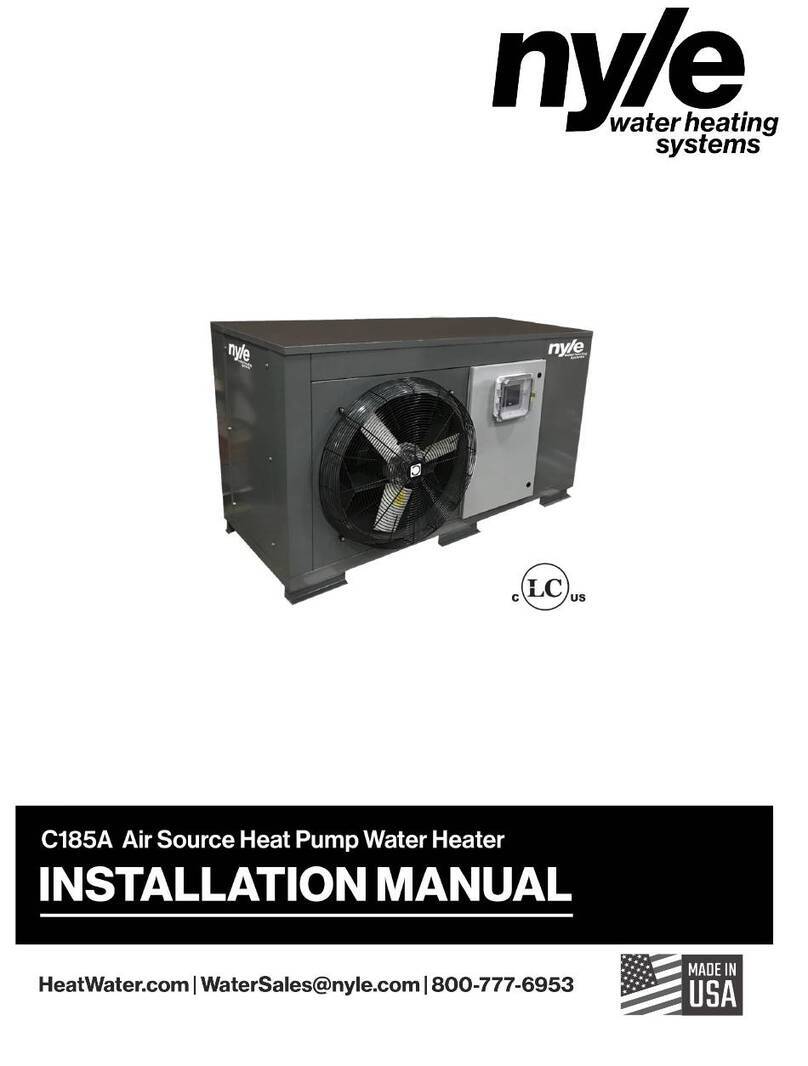
10
Thank You for purchasing this heat pump water heater. Properly
installed and maintained, it should give you years of trouble free
service.
Abbreviations found In this Instruction Manual include:
• HPWH - Heat Pump Water Heater
• ANSI - American National Standards Institute
• ASME - American Society of Mechanical Engineers
• NEC - National Electrical Code
• NFPA - National Fire Protection Association
• AHRI - Air-conditioning, Heating and Refrigeration Institute
QUALIFICATIONS
QUALIFIED INSTALLER OR SERVICE AGENCY:
Installation and service of this water heater requires ability
equivalent to that of a Qualied Agency (as dened by ANSI
below) in the eld involved. Installation skills such as plumbing,
electrical supply are required in addition to electrical testing skills
when performing service.
This heat pump water heater contains R-134a refrigerant and is
regulated as a stationary refrigeration appliance under Section
608 of the Clean Air Act. Servicing of the refrigeration circuit must
only be performed by agencies or individuals possessing Type II
or Universal certication as dened in Section 608 of the Clean
Air Act.
ANSI Z223.1 2006 Sec. 3.3.83: “Qualied Agency” - “Any
individual, rm, corporation or company that either in person or
through a representative is engaged in and is responsible for (a)
the installation, testing or replacement of gas piping or (b) the
connection, installation, testing, repair or servicing of appliances
and equipment; that is experienced in such work; that is familiar
with all precautions required; and that has complied with all the
requirements of the authority having jurisdiction.”
PREPARING FOR THE INSTALLATION
Read and understand this instruction
manual and the safety messages
herein before installing, operating or
servicing this water heater.
Failure to follow these instructions and
safety messages could result in death
or serious injury.
This manual must remain with the
water heater.
1. Read the “General Safety Information” section of this manual
rst and then the entire manual carefully. If you don’t follow
the safety rules, the heat pump water heater may not operate
safely. It could cause DEATH, SERIOUS BODILY INJURY
AND/OR PROPERTY DAMAGE.
This manual contains instructions for the installation,
operation, and maintenance of the heat pump water heater
(HPWH). It also contains warnings throughout the manual
that you must read and be aware of. All warnings and all
instructions are essential to the proper operation of the
HPWH and your safety. READ THE ENTIRE MANUAL
BEFORE ATTEMPTING TO INSTALL OR OPERATE
THIS WATER HEATING APPLIANCE.
INTRODUCTION
Detailed installation diagrams are in this manual. These
diagrams will serve to provide the installer with a reference
for the materials and suggested methods of piping. IT
IS NECESSARY THAT ALL WATER PIPING AND THE
ELECTRICAL WIRING BE INSTALLED AND CONNECTED
AS SHOWN IN THE DIAGRAMS.
Particular attention should be given to the installation of the
system (tank) temperature control. See page 19.
Turn off power to the water heater
before performing any service.
Electrical Shock Hazard
•
Label all wires prior to disconnecting
when performing service. Wiring errors
can cause improper and dangerous
operation.
•
Verify proper operation after servicing.
•
Failure to follow these instructions can
result in personal injury or death.
•
Be sure to turn off power when working on or near the
electrical system of the heat pump. Never touch electrical
components with wet hands or when standing in water.
When replacing fuses always use the correct size for the
circuit.
The principal components of the HPWH are identified in the
Features And Components section of this manual on page
10. The rating label on the HPWH also provides useful
information. These references should be used to identify the
heat pump, its components and optional equipment.
2. The installation must conform with these instructions and the
local code authority having jurisdiction and the requirements
of the power company. In the absence of local codes, the
installation must comply with the latest editions of the
National Electrical Code, ANSI/NFPA 70 or the Canadian
Electrical Code CSA C22.1. The National Electrical Code
may be ordered from: National Fire Protection Association,
1 Batterymarch Park, Quincy, MA 02269. The Canadian
Electrical Code is available from the Canadian Standards
Association, 8501 East Pleasant Valley Road, Cleveland,
OH 44131.
3. If after reading this manual you have any questions or do not
understand any portion of the instructions DO NOT proceed
with the installation. Call the toll free number listed on the
back cover of this manual for technical assistance.
4. In order to expedite your request, please have full model and
serial number available for the technician.
5. Carefully consider your intended placement and location for
the HPWH. See Locating The Water Heater on page 24.
6. Installation and service of this HPWH requires ability
equivalent to that of a licensed tradesman or Qualified Agency
in the field involved. See Qualifications on page 8.
7. For installation in California the HPWH appliance must be
braced or anchored to avoid falling or moving during an
earthquake. Instructions may be obtained from California
Office of the State Architect, 1102 Q Street, Suite 5100,
Sacramento, CA 95811.


















